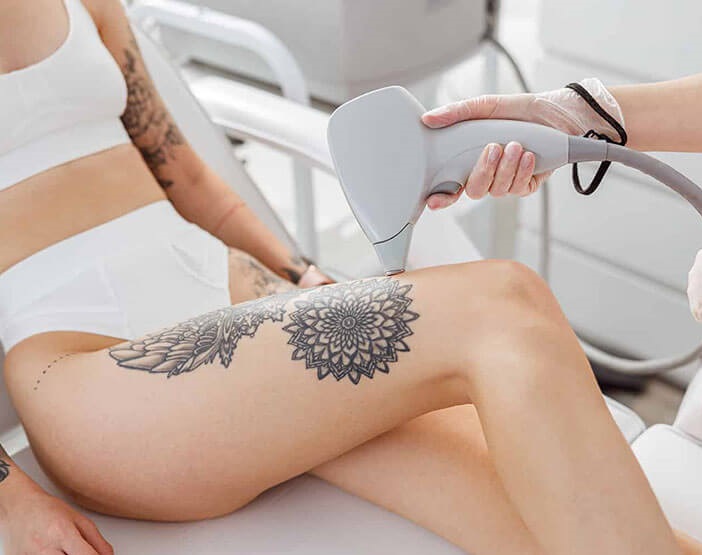
by arabicdynamic | Jul 12, 2025 | Health
Tattoos can be deeply personal expressions, but tastes, lifestyles, or circumstances often change over time, leading individuals to seek ways to eliminate or conceal unwanted ink. Two main options dominate the conversation: laser tattoo removal and tattoo cover-up. Both methods have their own appeal, benefits, and drawbacks. Deciding which is better depends on the person’s goals, tattoo characteristics, and expectations. This article explores these two approaches, highlighting the key differences and helping you make an informed decision.
How Laser Tattoo Removal Works:
Laser Tattoo Removal in Dubai (إزالة الوشم بالليزر في دبي) relies on advanced technology that breaks down the ink particles in the skin. This is typically done using Q-switched lasers or newer picosecond lasers, which emit high-intensity light beams that target specific ink pigments. As the laser penetrates the skin, it shatters the ink into smaller particles, which the body’s immune system gradually removes. The process requires multiple sessions, spaced weeks apart, and results in the progressive fading of the tattoo. Laser removal is considered the most precise and modern method available today.
Understanding Tattoo Cover-Up Techniques:
Tattoo cover-ups involve using new ink to mask the original design with a fresh tattoo. Skilled tattoo artists use darker colors and clever design strategies to hide the old artwork. The process often includes creative redesigning, color correction, and strategic layering. Cover-ups can be completed in one or a few sessions, depending on the size and complexity. However, not all tattoos are ideal candidates for cover-ups—dense black ink, large designs, or scarred areas can pose significant challenges.
Comparing the Results: Clarity vs. Creativity
One of the most noticeable differences between laser removal and cover-up is the final result. Laser tattoo removal aims for complete erasure or maximum fading, ideally leaving skin as close to its original state as possible. For many, this means a clean slate and the ability to move forward without any visual reminder of the old tattoo. On the other hand, cover-up tattoos transform the existing ink into something new. While this allows for creativity and aesthetic value, the final piece is often larger, darker, and more intricate to ensure effective concealment.
Skin Impact and Healing Process:
Laser removal and tattoo cover-ups affect the skin differently. Laser removal involves minor skin trauma, often compared to a sunburn or blistering, and requires diligent aftercare to prevent scarring or pigmentation changes. The healing process is gradual, occurring between sessions and continuing after the final treatment. Cover-ups also involve skin trauma, as fresh ink is applied over healed or previously tattooed areas. The healing process is similar to a new tattoo, but if the old tattoo was heavily scarred, the results may not heal evenly or might show irregular textures under the new design.
Flexibility and Future Options:
Laser tattoo removal offers more long-term flexibility. Once the tattoo is removed or significantly faded, the individual can choose to leave the area blank, get a new tattoo, or even start a partial cover-up with a much lighter base. This method provides greater freedom for future decisions. In contrast, a cover-up tattoo is essentially a commitment to another permanent design. While this may be satisfying artistically, it limits the ability to make changes later and may require even more complex removal if desired down the road.
Pain and Tolerance Levels:
Pain tolerance varies from person to person, but both procedures can cause discomfort. Laser removal is often described as more painful than getting a tattoo, especially during the initial sessions. The sensation is commonly likened to snapping rubber bands against the skin or a warm prickling. Cover-up tattoos, on the other hand, feel similar to the original tattoo process. However, since they often require deeper saturation and may go over sensitive or scarred skin, the experience can still be intense. Choosing between them may come down to whether one prefers short bursts of pain across many sessions or prolonged sessions of tattooing.
Final Verdict:
The choice between Laser Tattoo Removal in Dubai (إزالة الوشم بالليزر) and a cover-up depends on personal preferences, tattoo characteristics, and long-term goals. If you’re seeking a clean slate, have a tattoo with sentimental baggage, or want to eliminate the ink completely, laser tattoo removal may be the better option. However, if you’re artistically inclined, open to new designs, and working with a skilled tattoo artist, a cover-up can offer a fresh and meaningful alternative. Both approaches have evolved significantly in recent years, and with the right planning, either path can lead to a satisfying outcome.
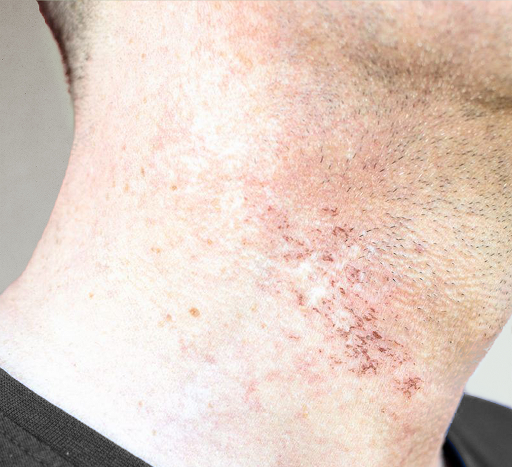
by arabicdynamic | Jul 11, 2025 | Health
Shaving can be a daily chore that often comes with unpleasant side effects like razor bumps, nicks, and irritation. For many, it’s a frustrating cycle—shave today, deal with redness tomorrow. Laser hair removal offers a long-term solution by targeting hair follicles directly and reducing the frequency of hair growth. Over time, many individuals experience smoother skin without the constant need to pick up a razor.
The Science Behind Smooth Skin:
Laser Hair Removal in Dubai (إزالة الوشم بالليزر في دبي) works through concentrated beams of light that are absorbed by the pigment in hair follicles. This energy damages the follicle, slowing or stopping future hair growth. Since the laser is highly precise, it only targets the hair while leaving the surrounding skin unharmed. With repeated sessions, the hair becomes finer and sparser, eventually eliminating the need for traditional hair removal methods altogether.
Razor Bumps Become a Thing of the Past:
One of the major advantages of laser hair removal is the elimination of razor bumps—those irritating, itchy red spots that often appear after shaving. These bumps are typically caused by ingrown hairs or friction from the razor. By reducing or removing the hair from the root, laser hair removal prevents new bumps from forming, offering lasting relief and smoother skin.
Say Farewell to Cuts and Nicks:
No one enjoys the sudden sting of a shaving cut or the sight of blood while trying to get a clean shave. These accidental injuries can happen to anyone, especially when rushing through a morning routine. Laser hair removal eliminates this risk entirely. There’s no need for sharp blades, creams, or hurried movements—just a series of gentle light treatments that work beneath the surface.
Great for Sensitive Skin Types:
For those with sensitive skin, shaving or waxing can often lead to rashes, burning sensations, or allergic reactions. Laser hair removal provides a safer alternative by minimizing direct skin contact. With proper care before and after each session, even those prone to irritation can enjoy the benefits of long-lasting smoothness without discomfort or inflammation.
Consistent Results for Long-Term Confidence:
Unlike shaving, which often leaves behind patches of stubble or missed spots, laser hair removal provides consistent, even results. Each treatment is tailored to your skin and hair type, ensuring thorough coverage and reducing the likelihood of regrowth. The outcome is not just smoother skin but also enhanced confidence in your appearance—whether you’re at the beach, the gym, or in daily life.
Time-Saving and Convenient:
Shaving daily or waxing regularly can be time-consuming and repetitive. With laser hair removal, the need for constant maintenance diminishes. After completing a series of sessions, most people enjoy weeks—or even months—without worrying about hair removal. This convenience makes laser hair removal especially appealing to those with busy lifestyles or anyone tired of constant grooming.
Smooth Skin Starts with the Right Choice:
Choosing laser hair removal means opting for a cleaner, safer, and more efficient way to manage unwanted hair. It’s more than a beauty decision—it’s a lifestyle upgrade that prioritizes skin health and freedom from daily shaving struggles. With advancements in technology, the process is now suitable for a wide range of skin tones and hair types, making it an inclusive and effective option for many.
Conclusion:
Razor bumps, nicks, and irritation no longer need to be part of your Laser Hair Removal in Dubai (إزالة الوشم بالليزر في دبي) routine. Laser hair removal offers a smarter, more lasting solution for those seeking smoother skin without the hassle. With consistency and proper care, you can enjoy the freedom of not having to reach for a razor every day—and step into a future where smooth, bump-free skin is your new normal.
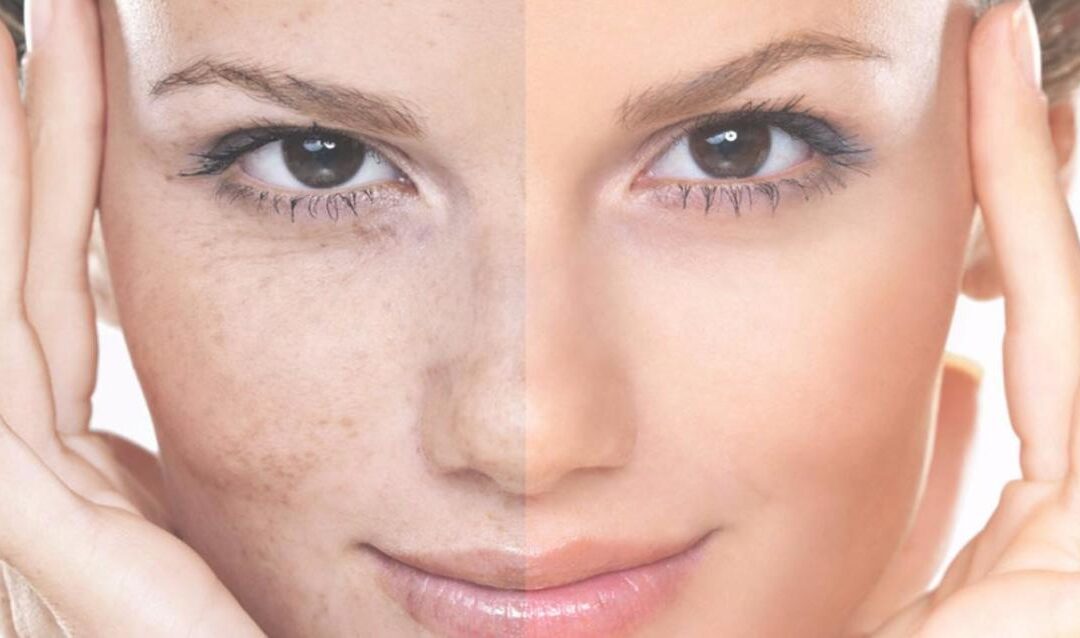
by arabicdynamic | Jul 10, 2025 | Health
Melasma is a common skin condition characterized by dark, discolored patches—usually on the face—caused by an overproduction of melanin. It primarily affects areas like the cheeks, forehead, upper lip, and chin. While it’s more common among women, especially during hormonal shifts such as pregnancy or birth control use, men can also experience it. Sun exposure, genetics, and certain medications can all trigger or worsen melasma. Importantly, while it’s not physically harmful, the emotional and psychological impact can be significant. Tackling these stubborn spots requires a gentle yet effective approach that works with your skin—not against it.
Gentle Cleansing: The First Step in Your Routine
Every effective Melasma Treatment in Dubai (علاج الكلف في دبي) journey begins with the basics—cleansing. A mild, non-foaming cleanser helps remove pollutants, excess oil, and makeup without stripping the skin of its natural barrier. Harsh soaps and scrubs can worsen melasma by causing inflammation and triggering pigment cells. Choose a pH-balanced cleanser that contains soothing ingredients like glycerin, chamomile, or aloe vera. Cleanse twice a day using lukewarm water and gentle, circular motions. This routine lays the foundation for a calm, well-prepared skin surface—ready to absorb treatments more effectively.
The Power of Sun Protection: Shield Your Skin Daily
Sun exposure is a major trigger for melasma, which means that consistent sun protection is non-negotiable. Ultraviolet (UV) rays stimulate melanin production, deepening existing patches and encouraging new ones to form. Daily use of broad-spectrum sunscreen with SPF 30 or higher is crucial. Look for mineral-based sunscreens containing zinc oxide or titanium dioxide, which sit on top of the skin and reflect UV rays. Apply generously 15–30 minutes before going outside and reapply every two hours, especially when sweating or swimming. Don’t forget to wear wide-brimmed hats and sunglasses for extra protection. Sun care isn’t just for sunny days—it’s a 365-day commitment.
Topical Treatments: Gentle Yet Effective Formulas
Topical treatments are key in managing melasma. Instead of aggressive bleaching agents, modern skincare formulations focus on calming inflammation and gently lightening pigmentation. Ingredients like niacinamide, licorice root extract, tranexamic acid, and kojic acid can help reduce melanin production and fade dark spots. These components work synergistically to brighten the complexion over time. When using these products, patience is essential—results may take several weeks to become visible. It’s also important to apply these treatments at night, when the skin’s regenerative process is at its peak and exposure to light is minimized.
Exfoliation: The Art of Gentle Renewal
Exfoliation encourages skin cell turnover, helping to fade dark patches more efficiently. However, with melasma, over-exfoliating can do more harm than good. Opt for gentle chemical exfoliants like lactic acid or mandelic acid, which work on the surface without causing irritation. These alpha-hydroxy acids (AHAs) dissolve the bonds between dead skin cells, revealing brighter, more even-toned skin beneath. Limit exfoliation to once or twice a week, and always follow with hydrating and soothing skincare to support the skin barrier. Over time, this practice can help lighten melasma without aggravating your skin.
Lifestyle Adjustments: Inside-Out Support
The skin reflects what’s happening inside the body. A balanced lifestyle can complement topical melasma treatments. Eating a nutrient-rich diet filled with antioxidants—such as vitamins C and E—can support skin health from within. Hydration is equally important; drinking enough water keeps the skin resilient and supple. Additionally, managing stress through mindfulness, sleep, or exercise helps regulate hormones, a common trigger for melasma. Avoiding triggers such as excessive heat (like saunas) and fragranced skincare can also prevent flare-ups. Supporting your body holistically enhances your skin’s ability to heal and regenerate.
Advanced Therapies: Options for Gentle Progress
For some individuals, melasma may require more intensive interventions. Non-invasive procedures such as chemical peels, microneedling, and low-energy laser treatments can be helpful when used cautiously. These treatments must be performed under expert guidance to ensure that they don’t worsen pigmentation through irritation or heat. Some therapies stimulate collagen and skin renewal while minimizing melanin production. It’s essential to approach these treatments with patience, spacing sessions appropriately and combining them with a strict at-home routine. When used correctly, these methods can accelerate improvement in a safe, controlled manner.
Long-Term Management: Preventing Relapse
Melasma is a chronic condition, meaning it can return even after successful treatment. Long-term success depends on a consistent skincare routine, sun protection, and lifestyle choices. Maintenance often involves continuing with gentle brightening agents and antioxidants to keep the skin tone even. Monitoring hormone levels or adjusting medications may also be necessary if they’re contributing factors. Ultimately, embracing a proactive mindset—rather than a reactive one—empowers individuals to maintain their results. Remember, managing melasma is a journey, and with the right care, lasting clarity is within reach.
Conclusion:
Melasma Treatment in Dubai (علاج الكلف ) requires a combination of patience, consistency, and a gentle touch. From proper cleansing and sun protection to carefully chosen topical treatments and supportive lifestyle habits, every step plays a role in healing the skin. While there may be no one-size-fits-all solution, an informed and balanced approach can deliver visible improvements without compromising skin health. By prioritizing skin-soothing strategies and mindful prevention, you can tackle even the most stubborn spots with grace and resilience.
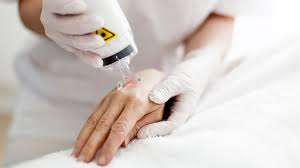
by arabicdynamic | Jul 8, 2025 | Health
Burn scars can vary greatly in appearance and severity depending on the depth, location, and healing process. These scars often develop as a result of thermal, chemical, electrical, or radiation burns. They can manifest as hypertrophic (raised), contracture (tightened skin), or keloid (overgrown) scars. Not only do burn scars impact skin texture and pigmentation, but they can also limit mobility and cause emotional distress. Traditional treatments like creams, pressure garments, and surgical interventions may offer limited success, especially in cases involving deep or widespread burns. This is where modern scar laser treatments are transforming the landscape of recovery and skin renewal.
The Role of Laser Therapy in Burn Scar Management:
Scar Laser Treatment in Dubai (إزالة الندبات بالليزر في دبي) has become one of the most advanced and effective tools in managing burn scars. Unlike topical treatments, lasers work beneath the surface of the skin, targeting scar tissue and stimulating the regeneration of healthy skin cells. Depending on the scar’s characteristics, different laser technologies can be used to reduce redness, flatten raised areas, improve pigmentation, and restore flexibility. What makes laser treatment particularly valuable is its ability to penetrate the dermis and promote collagen remodeling — a key factor in scar reduction. The result is not just improved appearance, but also enhanced skin function.
Fractional CO2 Laser: Resurfacing Burn-Damaged Skin
One of the most commonly used lasers for burn scars is the fractional CO2 laser. It works by creating microscopic thermal injuries in the scarred skin, triggering the body’s natural healing response. These tiny channels stimulate collagen production while leaving surrounding tissue intact, which promotes quicker healing. Over a series of sessions, the treatment can help reduce scar thickness, improve texture, and restore a more uniform tone. Particularly effective for hypertrophic and contracture scars, fractional CO2 laser treatment can significantly improve both aesthetic and functional outcomes without the need for surgical excision.
Pulsed Dye Laser: Targeting Redness and Inflammation
For burn scars that are red or inflamed, pulsed dye lasers (PDL) are a popular and proven option. This type of laser targets the blood vessels in the scar tissue, reducing redness and helping to soften the scar. By reducing vascularity, PDL can minimize the pain and itching often associated with healing burn scars. It is also known to reduce the risk of keloid formation when used early during the healing process. As a non-ablative laser, PDL doesn’t remove skin layers, which makes it a good choice for sensitive areas or those with thinner skin.
Erbium YAG Laser: Precision and Minimal Downtime
The Erbium YAG laser offers another approach to treating burn scars, particularly when fine precision is needed. It ablates the skin in very thin layers and is often used for lighter scars or delicate facial areas. This laser promotes smoother skin texture and helps blend scarred areas with the surrounding skin. It’s also known for causing less thermal damage compared to other ablative lasers, which results in reduced recovery times. For patients looking to refine the scar’s surface appearance without extensive downtime, Erbium YAG provides a gentler yet effective solution.
Combining Laser Types for Maximum Effect:
In many cases, a combination of laser treatments is used to achieve optimal results. For example, a fractional CO2 laser may be used for deep scar remodeling, followed by a pulsed dye laser to reduce redness and vascularity. This multimodal approach allows practitioners to address different aspects of the scar — from color to texture to flexibility — in a strategic manner. Treatments are often spaced out over several months to allow skin recovery and to gradually build improvement. The combination therapy has proven particularly effective in treating older or more complex burn scars that do not respond to single-modality treatments.
Considerations for Skin Type and Scar Maturity:
Not all burn scars are treated the same way, and laser selection often depends on individual factors such as skin tone, scar age, and depth. For instance, darker skin tones are more prone to hyperpigmentation after laser treatments, so settings must be adjusted carefully to minimize risks. Likewise, newer scars may respond differently than mature ones. Early intervention with vascular lasers like PDL can help reduce scar development, while fractional or ablative lasers are better suited for mature, fibrous tissue. A tailored approach based on these factors helps ensure safe and effective outcomes across diverse patient profiles.
Preparing for Treatment and Managing Expectations:
Preparation for laser scar treatment includes avoiding sun exposure, using skin-calming agents, and sometimes pre-treatment with topical medications to prevent pigment changes. After treatment, patients may experience redness, swelling, or temporary darkening of the scar. Proper aftercare — including moisturizers, sun protection, and follow-up care — plays a crucial role in achieving desired results. It’s also important to understand that laser treatments rarely erase burn scars completely. Instead, they aim for significant visual and functional improvement over time. Patience, consistency, and realistic expectations are key to the treatment journey.
Conclusion:
Thanks to advancements Scar Laser Treatment in Dubai (إزالة الندبات بالليزر), individuals with burn scars today have more effective options than ever before. Whether the goal is to reduce scar height, improve flexibility, or simply feel more confident, laser treatments offer a customizable path to healing and renewal. From fractional CO2 and pulsed dye lasers to erbium YAG and combination therapies, each approach is tailored to meet the unique needs of the scar and the person behind it. While the road to recovery may require time and multiple sessions, the potential for transformation — both physical and emotional — is profound and empowering.
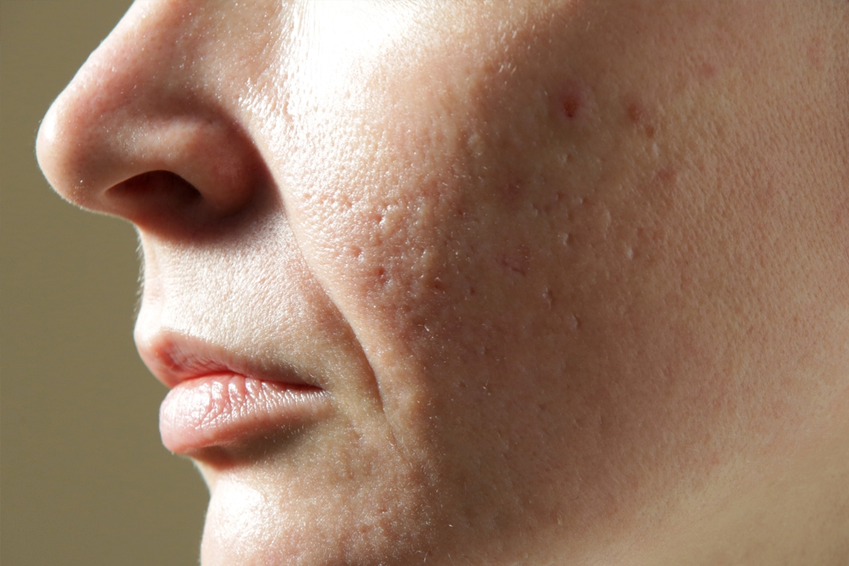
by arabicdynamic | Jul 7, 2025 | Health
توسّع المسام هو مشكلة شائعة تؤثر على مظهر البشرة ونعومتها، ويعود سببها إلى مجموعة من العوامل مثل تراكم الزيوت والشوائب، فقدان مرونة الجلد، العوامل الوراثية، والتعرض المفرط لأشعة الشمس. مع مرور الوقت، تفقد البشرة قدرتها على شد المسام طبيعيًا، مما يجعلها تبدو أكثر وضوحًا، خاصة في منطقة الأنف والجبهة والخدين. فهم السبب هو الخطوة الأولى نحو العلاج الفعال.
الروتين الليلي العميق: أساس العلاج بين عشية وضحاها
العناية الليلية بالبشرة هي الوقت المثالي للتركيز على تقليص علاج المسام الواسعة في دبي، لأن البشرة تدخل في مرحلة التجديد أثناء النوم. يبدأ الروتين بغسل الوجه بغسول لطيف يزيل الزيوت الزائدة دون تجفيف البشرة، ثم استخدام تونر يحتوي على حمض الساليسيليك أو النياسيناميد، يلي ذلك مصل خاص بتقليص المسام، وأخيرًا ترطيب مغذٍ يعزز إصلاح البشرة خلال الليل.
:استخدام المكونات النشطة الفعّالة
هناك مكونات فعالة يجب دمجها في روتينك الليلي للمساعدة في تقليص المسام بسرعة، أبرزها:
الريتينول: يعزز تجديد الخلايا ويقلل من ظهور المسام مع الاستخدام المنتظم.
حمض الجليكوليك: يقشر الطبقة الخارجية من البشرة وينظف المسام بعمق.
النياسيناميد: يساعد في تنظيم إفراز الدهون وتحسين مرونة الجلد.
الطين الطبيعي: مثل طين الكاولين والبنتونيت، يمتص الزيوت وينقي المسام.
استخدام هذه المكونات بشكل مدروس يمكن أن يُظهر نتائج ملحوظة خلال أيام قليلة.
:تقنيات طبيعية بسيطة لليلة واحدة
بعض العلاجات المنزلية يمكن أن تكون مفيدة لتضييق المسام مؤقتًا بين عشية وضحاها. مثال على ذلك:
مكعبات الثلج: تمريرها على الوجه يحفّز الدورة الدموية ويشد المسام فورًا.
قناع بياض البيض: يعمل على شد البشرة وتضييق المسام بفضل خصائصه القابضة.
خل التفاح الطبيعي: يستخدم كتونر طبيعي لإعادة توازن درجة حموضة البشرة وتقليص المسام.
هذه الحلول فعالة عند استخدامها كجزء من روتين متكامل وليس كعلاج مستقل.
:أهمية الترطيب الليلي العميق
على عكس ما يعتقد البعض، البشرة الدهنية التي تعاني من مسام واسعة تحتاج إلى ترطيب، ولكن باستخدام مرطبات خفيفة غير كوميدوجينيك (لا تسد المسام). الترطيب الجيد يحافظ على توازن إفراز الزيوت، مما يمنع انسداد المسام وتوسّعها. المرطبات التي تحتوي على حمض الهيالورونيك ومضادات الأكسدة تعزز تجدد الخلايا خلال الليل وتدعم مظهر بشرة مشدودة ومتجانسة.
:النوم الجيد وتأثيره على المسام
الجمال يبدأ من الداخل، والنوم العميق جزء لا يتجزأ من العلاج الليلي للمسام الواسعة. خلال النوم، تنتج البشرة الكولاجين وتصلح الأنسجة، مما يعزز شد الجلد ويقلل من وضوح المسام. لذلك، احرصي على نوم متواصل لا يقل عن 7 ساعات يوميًا مع الالتزام بنظافة الوسادة وتغييرها بانتظام لتجنب تراكم البكتيريا والزيوت التي قد تؤثر سلبًا على البشرة.
:التعامل الذكي مع الدهون والزيوت
تنظيم إفراز الدهون من العوامل الأساسية في تقليص المسام. استخدمي منتجات تحتوي على حمض الساليسيليك أو الفحم المنشط لتنظيف المسام بعمق دون أن تخل بتوازن البشرة. كما يُنصح بتجنّب استخدام المنتجات الثقيلة أو المكياج أثناء الليل لأن ذلك يؤدي إلى انسداد المسام وتفاقم المشكلة. التنظيف المزدوج في المساء (بزيت منظف ثم غسول رغوي) هو خطوة مثالية لإزالة بقايا الشوائب بالكامل.
:استمرارية الروتين والمراقبة المنتظمة
رغم أن بعض النتائج تظهر بين عشية وضحاها، فإن الحفاظ على بشرة خالية من المسام الواسعة يتطلب التزامًا طويل المدى. من الضروري مراقبة رد فعل البشرة وتعديل المنتجات عند الحاجة. يُفضل القيام بتقشير لطيف مرتين في الأسبوع واستخدام أقنعة الطين مرة أسبوعيًا لتجديد المسام. كذلك، يجب تجنّب العادات السيئة مثل لمس الوجه كثيرًا أو النوم دون إزالة المكياج.
:خاتمة
علاج المسام الواسعة بين عشية وضحاها ليس حلمًا مستحيلًا، بل نتيجة لتكامل خطوات بسيطة وفعالة تبدأ من الروتين الليلي وتنتهي بالعناية المستمرة. بفهم الأسباب، واستخدام المكونات النشطة، والالتزام بعادات صحية للبشرة، يمكن تحقيق نتائج ملحوظة بسرعة. السر يكمن في التوازن بين العناية الخارجية والنمط الحياتي الصحي، ليبدو وجهك أكثر صفاءً ونقاءً كل صباح.





